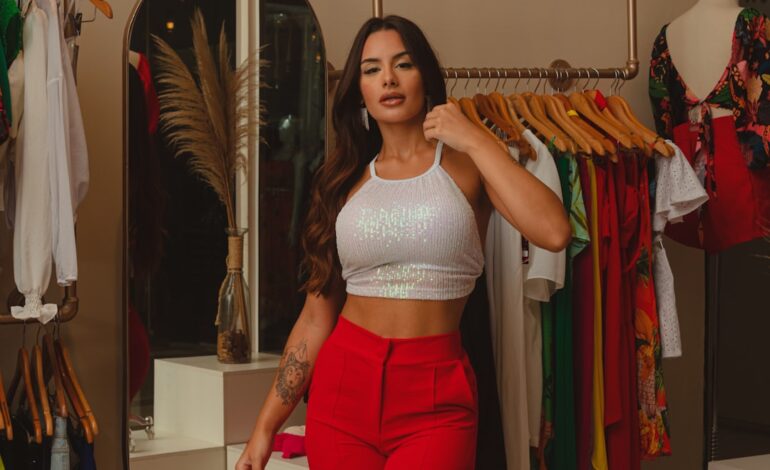The future is now: 10 emerging fashion designers you need to know in 2025

The new guard: Why emerging designers are the pulse of fashion
In the ever-spinning world of fashion, it’s easy to get mesmerized by the heritage houses and their blockbuster shows. Chanel, Dior, Gucci—these names are the bedrock of the industry. But where does the real, ground-shaking change come from? It bubbles up from the studios of the lesser-known, the recent graduates, and the creative rebels who are quietly defining the future of what we wear. As we look towards 2025, the conversation isn’t just about new trends; it’s about new voices. These are the top emerging fashion designers poised to become the next household names.

The class of 2025 is driven by a different set of rules. They are digital natives who see no boundary between physical and virtual worlds. They are activists who weave sustainability and social consciousness into the very fabric of their collections. They champion inclusivity not as a marketing tactic, but as a core principle. They are resurrecting ancient crafts and fusing them with cutting-edge technology to create something entirely new. For anyone who loves fashion, following these up-and-coming designers isn’t just about spotting the next big thing—it’s about witnessing the industry evolve in real time. So, get your notepad ready. Here are the names you’ll be seeing everywhere in 2025.
What defines the next generation of designers?
Before we dive into our list, it’s crucial to understand the seismic shifts these new creators represent. Unlike previous generations who often followed a rigid path, today’s emerging talent is characterized by a few key principles that are radically reshaping the industry from the inside out.
- Radical sustainability: This goes far beyond using organic cotton. We’re talking about designers who build their entire business model around circularity, using everything from algae-based sequins and mushroom leather to innovative, waste-free pattern cutting. They aren’t just making clothes; they’re proposing solutions.
- Tech-integrated craftsmanship: The new guard is fluent in both tradition and technology. You’ll find designers 3D-printing intricate lace, creating digital-only collections for the metaverse, and using AI to generate patterns, all while honoring and employing age-old artisanal techniques like hand-weaving or natural dyeing.
- Authentic inclusivity: For these designers, diversity is not a trend. Their collections are inherently gender-fluid, their size ranges are expansive, and their casting and campaigns reflect the real world. They design for communities, not just for a specific demographic.
- Storytelling over spectacle: While a dramatic runway show is always exciting, many new designers are focusing on building a deep, narrative-driven connection with their audience. Each collection tells a story, whether it’s about their cultural heritage, a political statement, or a personal journey, creating fashion with substance and soul.
Our picks: The emerging fashion designers to watch in 2025
Tracking talent from the graduate shows of Central Saint Martins to the bustling creative hubs of Lagos and Seoul, we’ve curated a list of the designers whose vision and innovation have us most excited for the year ahead.
1. Elara Vance: The bio-couture architect

Hailing from Amsterdam, Elara Vance is a name whispered in circles that merge science and style. A graduate in both material science and fashion design, Vance treats fabric as a living entity. Her signature is creating structured, almost architectural garments from lab-grown materials. Think glowing textiles infused with bioluminescent algae or a ‘self-healing’ jacket made from a polymer that repairs minor tears. Her aesthetic is sharp, minimalist, and otherworldly, often compared to a more organic version of Iris van Herpen. Vance is a leader among the new fashion designers who prove that the most sustainable future is one we invent ourselves. Keep an eye out for her innovative accessories, which often incorporate 3D-printed elements from recycled plastics.
2. Kenji Tanaka – ‘Studio Kintsugi’: The modern reconstructionist
Based in Tokyo, Kenji Tanaka’s label, ‘Studio Kintsugi’, is named after the Japanese art of repairing broken pottery with gold. This philosophy is the heart of his brand. Tanaka sources high-quality vintage and deadstock garments—classic Burberry trench coats, old Levi’s denim, silk kimonos—and masterfully deconstructs and reconstructs them into entirely new, hybrid pieces. An old military jacket might be fused with the sleeves of a delicate silk blouse, its seams traced in gold thread. His work is a powerful statement on consumer culture, celebrating imperfection and longevity. In 2025, as the push for circular fashion intensifies, Tanaka’s thoughtful, artful approach to upcycling will place him at the forefront of the movement.
3. Amara Okoro: The weaver of heritage
Nigerian-British designer Amara Okoro is a vibrant force of storytelling. Her collections are a rich celebration of West African textile traditions, specifically Adire (indigo dyeing) and Aso Oke (hand-loomed cloth). But this is far from traditional. Okoro applies these intricate, handcrafted fabrics to modern, razor-sharp silhouettes like power suits, structured corsets, and voluminous gowns. Her use of color is joyful and unapologetic, and each pattern tells a story from Yoruba mythology. Celebrities like Zendaya and Lupita Nyong’o have already been spotted in her designs, drawn to their unique blend of cultural pride and red-carpet-ready elegance. Okoro represents the future of global fashion: authentic, culturally rich, and utterly contemporary.
4. Sasha Volkov – ‘FORMLESS’: The champion of gentle-fluidity
Operating out of a small studio in Berlin, Sasha Volkov is redefining what gender means in clothing with their label, ‘FORMLESS’. While genderless fashion isn’t new, Volkov’s approach is unique. They focus on ‘gentle-fluidity’, creating exquisitely draped pieces in soft, sustainable fabrics like Tencel and bamboo silk that adapt to any body shape. The magic is in the intelligent, often hidden, system of ties, buttons, and drawstrings that allow the wearer to transform a single garment into multiple silhouettes. A flowing tunic can become a fitted dress; wide-leg trousers can be cinched into a tapered shape. It’s intelligent, empathetic design that prioritizes personal expression and comfort above all else.
5. Isabella Rossi: The new romantic
In a world leaning towards minimalism and tech, Milan-based Isabella Rossi offers a breath of fresh, romantic air. A master of drapery and delicate details, Rossi’s work is a love letter to historical fashion, reinterpreted for the modern woman. Think Renaissance-inspired puff sleeves on a sleek bodysuit, or Victorian-era lace collars on an otherwise simple slip dress. She works exclusively with Italian-milled, recycled textiles and uses natural dyes made from flowers and food waste from her local community. Her aesthetic is soft, ethereal, and powerfully feminine, proving that conscious design can also be breathtakingly beautiful. She is a designer to watch for those who believe in the enduring power of romance in fashion.
How you can discover and support emerging talent
Loving the work of these future stars is one thing, but how can you actively support them? As a fashion enthusiast, you have more power than you think to help shape the industry. Here are a few simple ways to champion the next generation of designers:
- Follow and engage on social media: A simple follow, like, or thoughtful comment can make a huge difference to a small brand’s visibility. It’s the easiest way to stay updated on their latest work and sample sales.
- Shop directly or from independent boutiques: Whenever possible, buy from the designer’s own website or from curated boutiques that stock emerging talent (like Ssense, LN-CC, or a local favorite). This ensures a higher percentage of the profit goes directly to the creator.
- Look beyond the major fashion weeks: Pay attention to graduate showcases from top fashion schools and smaller, city-based fashion weeks (like Copenhagen, Seoul, or Lagos), which are often hotbeds for new talent.
- Value the story: When you invest in a piece from an emerging designer, you’re not just buying a piece of clothing—you’re buying a piece of their story, their craftsmanship, and their vision for a better future. Wear it with pride and share that story.
The future of fashion is in their hands
The landscape of 2025 will be defined not by one single trend, but by the multitude of diverse, powerful stories told by designers like these. They are the ones asking the tough questions, pushing the boundaries of what’s possible, and creating a more thoughtful, innovative, and inclusive fashion world. While their names might not yet have the global recognition of the giants, their impact is already palpable. Keep watching, because the emerging fashion designers of today are the icons of tomorrow, and the future they’re building looks brighter than ever.




